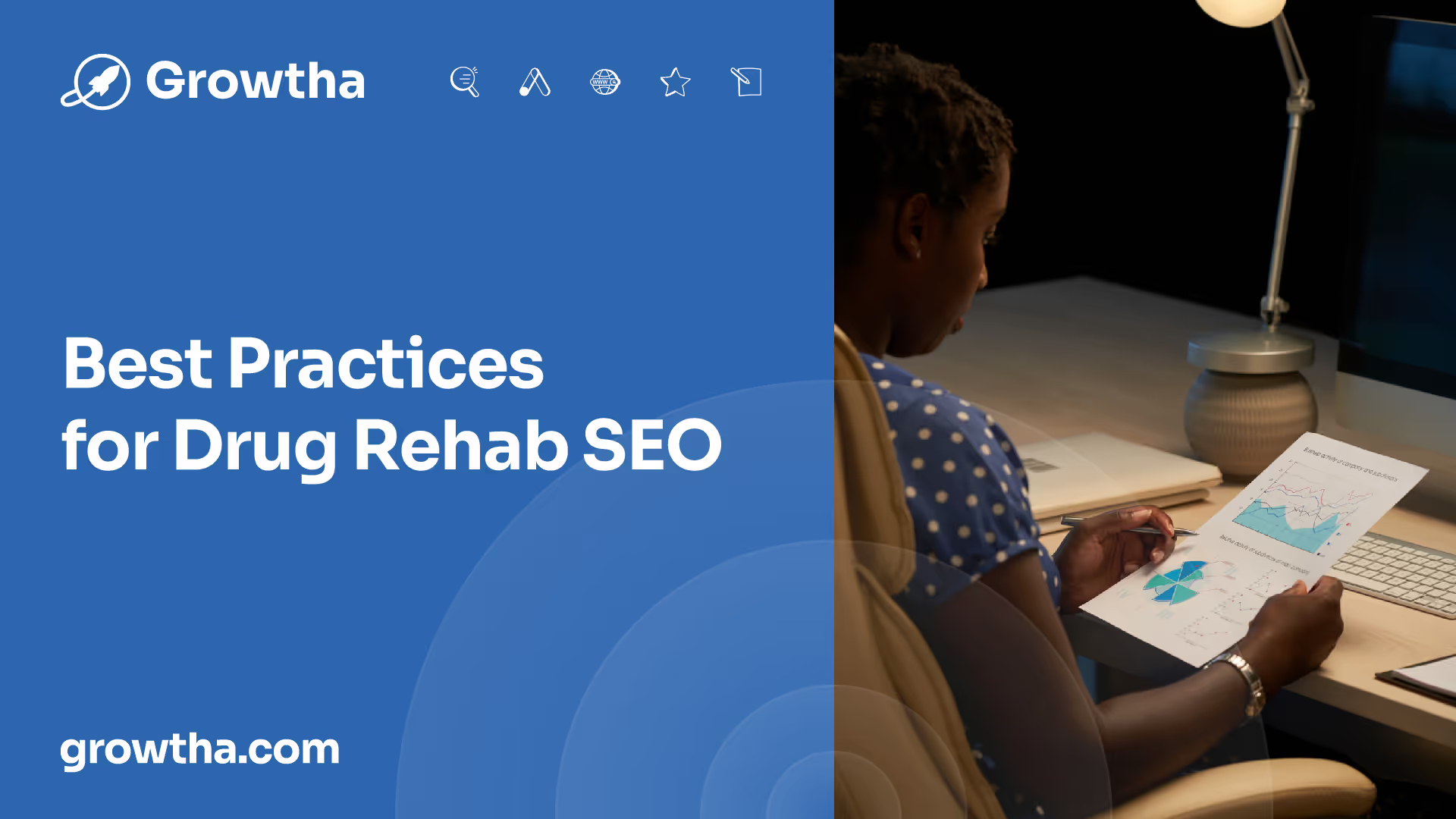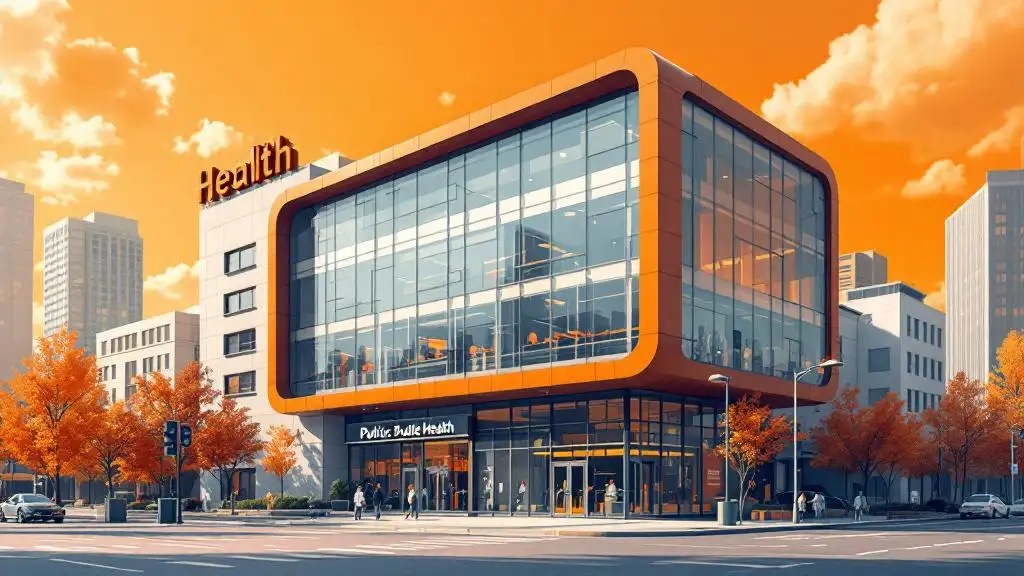SEO Rehab Facilities Statistics Exposed
When it comes to promoting drug rehab facilities online, Search Engine Optimization (SEO) plays a crucial role in increasing visibility and attracting potential clients.


SEO Rehab Facilities Statistics Exposed
Understanding Drug Rehab SEO
When it comes to promoting drug rehab facilities online, Search Engine Optimization (SEO) plays a crucial role in increasing visibility and attracting potential clients. Understanding the benefits and challenges of drug rehab SEO is essential for rehab centers looking to establish a strong online presence.
Benefits of Drug Rehab SEO
Implementing SEO strategies for drug rehab facilities can yield several significant benefits. According to Webserv, some of the key advantages include:
- Increased Website Traffic: By optimizing their websites for search engines, rehab facilities can attract more organic traffic, leading to a higher number of potential clients discovering their services.
- Higher Search Engine Rankings: SEO techniques help rehab centers improve their rankings in search engine results pages (SERPs). Higher rankings increase visibility and make it more likely for individuals seeking addiction treatment to find the rehab facility's website.
- Improved Online Reputation: Effective SEO strategies help rehab centers establish a positive online reputation. By consistently providing valuable and informative content, rehab facilities can build trust and credibility with potential clients and their families.
- More Admissions: Ultimately, drug rehab SEO aims to generate more admissions for rehab centers. By increasing online visibility and attracting targeted traffic, optimized websites have a higher chance of converting visitors into clients.

Challenges of Drug Rehab SEO
While drug rehab SEO offers numerous benefits, it also presents unique challenges. According to Webserv, some of the main challenges in drug rehab SEO include:
- Strict Industry Regulations: The drug rehab industry is heavily regulated, and rehab centers must navigate various legal and ethical considerations when developing SEO strategies. Compliance with regulations while still effectively promoting services can be challenging.
- High Competition: The addiction treatment industry is highly competitive, with many rehab centers vying for the same target audience. Standing out from the competition and gaining visibility can be a significant challenge.
- Sensitive Topic: Addiction and recovery are sensitive subjects, and rehab centers must approach SEO with sensitivity and empathy. Balancing the need to promote services with the need to respect the privacy and dignity of individuals seeking treatment requires careful consideration.
- Trust and Credibility: Establishing trust and credibility is vital in the drug rehab industry. Potential clients and their families need to feel confident in a rehab facility's expertise and reputation. Rehab centers must demonstrate their expertise and build trust through their online presence.
Understanding the benefits and challenges of drug rehab SEO is crucial for rehab facilities looking to effectively reach their target audience and make a positive impact in the lives of individuals seeking addiction treatment. By implementing best practices and addressing the unique challenges of the industry, rehab centers can maximize the potential of SEO to connect with those in need and establish themselves as leaders in the field.

Best Practices for Drug Rehab SEO
To effectively optimize drug rehab facility websites and improve their online visibility, several best practices can be implemented. These practices encompass keyword research and optimization, content creation and optimization, and technical SEO implementation.
Keyword Research and Optimization
Keyword research is a fundamental aspect of drug rehab SEO. By identifying the relevant keywords and phrases that potential clients may use when searching for rehab facilities, you can optimize your website to appear in their search results. Thorough keyword research helps you understand the language and terms people use to find addiction treatment centers.
To optimize your website for these keywords, incorporate them strategically throughout your website's content, meta tags, headings, and URLs. This optimization helps search engines understand the relevance of your website to users' search queries and improves your chances of appearing in search engine results.
Content Creation and Optimization
Creating valuable and informative content is crucial for drug rehab SEO. By providing relevant and well-written content, you can establish your rehab facility as a trusted resource and attract potential clients. Content can take the form of blog articles, FAQs, success stories, treatment information, and more.
When optimizing your content for search engines, consider incorporating relevant keywords naturally. However, it's essential to prioritize user experience and readability. High-quality content that genuinely helps and educates readers is more likely to rank well in search results and engage potential clients.
Technical SEO Implementation
Technical SEO implementation focuses on optimizing the technical aspects of your website to improve its search engine performance. This includes improving site speed, mobile responsiveness, URL structure, meta tags, and other technical elements.
Optimizing site speed ensures that your website loads quickly, enhancing the user experience and reducing bounce rates. Mobile responsiveness is crucial as more people access the internet using their mobile devices. Search engines prioritize mobile-friendly websites in their rankings, so ensuring your site is optimized for mobile devices is essential.
Additionally, implementing technical SEO elements such as meta tags, structured data, and XML sitemaps helps search engines understand and index your website's content more effectively.
By following these best practices, drug rehab facilities can improve their online presence, attract more organic traffic, and connect with individuals seeking addiction treatment. Implementing proper SEO techniques is a cost-effective way to reach potential clients and establish trust and credibility in the digital landscape.
Impact of SEO Updates
The field of SEO for drug rehab facilities has experienced significant changes due to updates in search engine algorithms. These updates, implemented in 2024, have brought about a shift in priorities, focusing on user experience, content quality, and accessibility. Drug rehab facilities must adapt their SEO strategies to align with these updates and ensure their online visibility.
User Experience and Content Quality
Search engine algorithms in 2024 prioritize user experience and high-quality content. Websites that adhere to the latest SEO best practices for drug rehab facilities experience a significant increase in organic traffic [1]. One crucial aspect of user experience is page loading speed. Pages that load within two seconds have an average bounce rate of just 9%, while pages that take five seconds to load have a staggering 38% bounce rate. Therefore, optimizing page load times is vital for retaining visitors and reducing bounce rates.
To provide a positive user experience, drug rehab facilities should prioritize technical SEO aspects, such as website speed optimization, mobile responsiveness, and easy navigation. By improving these elements, facilities can enhance the overall user experience and increase the likelihood of visitors engaging with their website.
Content quality is also a crucial factor in SEO for drug rehab facilities. Search engines favor comprehensive, high-quality content that demonstrates expertise and builds trust with the audience. It's essential for rehab centers to provide accurate, reliable, and medically sound information on their websites. Adhering to E-A-T principles (Expertise, Authoritativeness, and Trustworthiness) is a fundamental aspect of creating content that aligns with the latest SEO updates.
Local SEO Importance
In 2024, local SEO has become increasingly important for drug rehab facilities. The accuracy and consistency of NAP (Name, Address, Phone number) details across the web significantly impact local search rankings. It is crucial for rehab centers to ensure that their NAP details are up-to-date and consistent across various online directories and platforms. Managing online reputation is also essential, as reviews and ratings play a significant role in local SEO. Encouraging positive reviews and actively addressing any negative feedback can help improve the overall local search visibility of drug rehab facilities [1].
Mobile-First Indexing
With the majority of internet users accessing the web via mobile devices, mobile-first indexing has become crucial for the online visibility of drug rehab facilities. Search engines prioritize the mobile versions of content, considering factors such as mobile responsiveness, responsive web design, and fast loading times. Rehab facilities should optimize their websites for mobile users to ensure a seamless and user-friendly experience. This includes using responsive design techniques and optimizing images and other media for mobile devices. By prioritizing mobile optimization, drug rehab facilities can improve their search engine rankings and reach a wider audience.
Adapting to the impact of SEO updates on drug rehab facilities is essential for maintaining online visibility and reaching individuals in need of their services. By focusing on user experience, content quality, local SEO, and mobile optimization, rehab centers can enhance their SEO strategies and effectively connect with their target audience.
Importance of Link Building
In the realm of SEO for rehab facilities, link building plays a crucial role in enhancing website authority and improving online visibility. By building relevant and high-quality backlinks, rehab centers can establish trust, credibility, and attract more organic traffic. Let's explore the importance of link building in more detail.
Building Website Authority
Link building is an essential aspect of SEO for drug rehab facilities. By acquiring backlinks from reputable and relevant sources, rehab centers can enhance their website authority. These backlinks serve as a vote of confidence, indicating to search engines that the site is trustworthy and credible. The more high-quality backlinks a rehab center obtains, the higher its chances of ranking well in search engine results.
Website authority is a key factor that search engines consider when determining the relevance and value of a website. By building a strong network of backlinks, rehab centers can establish themselves as authoritative sources in the industry. This can lead to improved visibility, increased organic traffic, and ultimately, more potential patients and their families being reached.
Collaborations for Link Building
Collaborating with industry professionals and relevant websites is an effective strategy for link building in the drug rehab industry. This collaborative approach can involve various methods such as guest blogging, participating in interviews or podcasts, and forming partnerships for link exchanges or mentions.
By guest blogging on reputable websites within the industry, rehab centers can showcase their expertise and gain exposure to a wider audience. This not only helps in building backlinks but also establishes the rehab center as a thought leader in the field. Participating in interviews or podcasts provides opportunities for the rehab center to share valuable insights, which can lead to mentions and backlinks in the content produced by industry professionals.
Forming partnerships with other relevant websites can also be beneficial for link building. Through collaborations, rehab centers can exchange links or mentions, further enhancing their online presence and authority.
By utilizing these collaborative link building strategies, rehab centers can boost their visibility in search engine results and attract more potential patients who are seeking reliable and reputable treatment options.
Link building is an integral part of SEO for drug rehab facilities. By focusing on building high-quality backlinks and collaborating with industry professionals, rehab centers can enhance their website authority, improve search engine rankings, and ultimately reach a wider audience in need of their services.
Trends in Addiction Treatment
As the field of addiction treatment continues to evolve, there are several noteworthy trends that shape the landscape. Two key aspects to consider are government funding trends and treatment center growth patterns.
Government Funding Trends
Between 2004 and 2016, there has been a notable shift in the composition of addiction treatment centers. For-profit entities providing addiction treatment increased by 21%, while the percentage of government or nonprofit treatment centers declined steadily during the same period. This shift toward privatized care reflects the expanded demand for treatment services, particularly after the Affordable Care Act made substance abuse treatment an essential health benefit for millions of individuals [2].
In 2016, approximately 15% of for-profit treatment centers received some form of government funding, indicating the reliance of for-profit facilities on government funding sources besides payments from patients or insurance companies. This demonstrates the importance of government support in ensuring access to addiction treatment services [2].
It is worth noting that Wyoming stands out as an exception with 72% of its treatment centers offering free services. This suggests that access to treatment at no cost may be influencing the state's lower rate of opioid-related overdose deaths compared to the national average [2].
A concerning trend is the decline in the percentage of treatment centers receiving government funding. Between 2000 and 2005, at least 60% of treatment centers received government funding, but by 2016, this percentage had decreased to only 52%. This trend poses challenges in effectively combating the opioid epidemic at both the state and federal levels [2].
Treatment Center Growth Patterns
The growth patterns of addiction treatment centers vary across different states. Some states, such as Minnesota, West Virginia, North Carolina, Hawaii, and Arkansas, have seen significant growth in government or nonprofit treatment facilities from 2000 to 2016. This growth reflects the efforts to expand access to treatment options for individuals struggling with addiction.
On the other hand, private, for-profit treatment providers in states like Utah, Idaho, Iowa, and Arkansas expanded by at least 300% during the same period. This growth in private treatment centers highlights the increasing demand for addiction treatment services and the role that for-profit entities play in meeting that demand [2].
Understanding these trends in addiction treatment can help guide the development of effective strategies to address the evolving needs of individuals seeking help for substance abuse. By recognizing the impact of government funding and the growth patterns of treatment centers, stakeholders can work towards improving access to quality addiction treatment services nationwide.
Length of Stay in Drug Rehab
When it comes to drug rehabilitation, the length of stay can vary depending on several factors. It is important to understand the factors that influence the length of stay and how individualized treatment approaches play a role in the recovery process.
Factors Influencing Length of Stay
The length of stay in drug rehab is not a one-size-fits-all approach. It depends on various factors such as the severity of the addiction, the type of substance being abused, the individual's overall health, and their response to treatment. According to Red Oak Recovery, addiction treatment typically lasts 30 days, but some programs may extend to 60 or 90 days. Those with mild addictions may only require a few weeks of treatment, while individuals with severe addictions may need several months.
It is crucial to consult with a doctor or treatment specialist to determine the appropriate length of stay for an individual. They can assess the specific needs and circumstances of the person seeking treatment, taking into account their addiction severity, mental health status, and any underlying medical conditions. By tailoring the treatment duration to the individual, they can receive the necessary support and care to facilitate their recovery journey.
Individualized Treatment Approaches
Individualized treatment approaches play a significant role in determining the length of stay in drug rehab. Each person's addiction and recovery process is unique, and an individualized approach ensures that their specific needs are met. Treatment plans should be personalized to address the underlying causes of addiction, co-occurring disorders, and any other individual factors that may impact the recovery process.
By customizing treatment programs, rehab facilities can offer a comprehensive range of therapeutic interventions, such as cognitive-behavioral therapy, group counseling, family therapy, and holistic approaches. These individualized approaches can help individuals develop coping mechanisms, address past traumas, learn relapse prevention skills, and build a foundation for long-term recovery.
The goal of individualized treatment is to provide ongoing support and guidance throughout the recovery journey. By offering personalized care, rehab facilities can better meet the specific needs of each individual, potentially reducing the risk of relapse and promoting lasting recovery.
In conclusion, the length of stay in drug rehab varies for each person and depends on various factors. Individualized treatment approaches cater to the unique needs of individuals, allowing them to receive the appropriate support and care to achieve long-term recovery. By addressing the factors that influence the length of stay and providing personalized treatment, drug rehab facilities can contribute to the success of individuals' recovery journeys.
References
[2]: https://americanaddictioncenters.org/blog/us-trends-addiction-treatment







